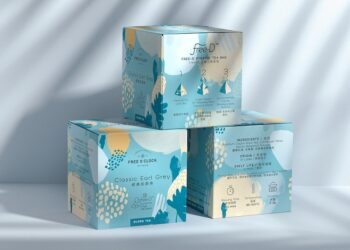Aside the immediately recognizable, and sizable margin of difference between upstroke and downstroke forces reported in this curve, the range over which this curve operates is something quite strange. Taking into consideration that the peak of the bump, labeled as the ‘pressure point’, and the bottom out both peak at 50g. of force, this means that this depth stretches all the way down into the ‘ultralight’ spring weight range of 35g. of force, with the return reaching stupidly low at 10g. of force. And, further compounding the strangeness of all of these features, it done in a significantly reduced travel distance of only 3.3 mm, much shorter than even other ‘reduced travel distance’ or long pole switches.
To this end, though, many of you are wondering if you can actually feel the differences in the force diagram mentioned above or if it’s simply me nerding out about a chart because I’m an engineer and I like weird data as such. With respect to the downstroke, I feel like you definitely do feel most of these features decently well. While there does feel like there is a bit more of a noticeable linear pretravel region in these than what the diagram may belay, the relatively short, sharp, yet still rounded tactile bump is present as well as the ‘operating point’ valley at 35g. Interestingly, the sharp jump up to the linear post travel region in terms of force demonstrated around 2 mm is actually noticeable and when pressed in slowly given a sort of “two stage” stroke design. The upstroke also seems to fairly well match this force curve diagram, minus the absence of the two-stage feeling through the return of the stem to the top housing.
Beyond the high set, but not out-of-gate well rounded and short tactile bump of the Banana switches, they’re also decently smooth but have a tiny bit of scratch with them. While we’ve all become a bit accustomed to near perfect levels of factory lubing from some of the more lauded switch houses of this year, these are still fairly competitive for a relatively rusty producer in modern Huano switches. As well, the housing collisions are both fairly solid, firm, and balanced, without much sharp, jarring, or strange impacts from both the bottom pole and the polycarbonate top housings. That is not to say, though, that the bottoming out on the pole is imperceptible. It is noticeable, but simply doesn’t carry the same short of stabbing sharpness that switches such as Moyu Blacks have.
Sound
The sound of the Banana switches is actually surprisingly solid in spite of the design features of it has like its tactile bump, polycarbonate top housing, and long stem pole which all generally tend to be antagonistic to the overall sound of switches. Sitting squarely at a medium in terms of overall volume, the tactile bump is equally matched in volume to both of the housing collisions. Matching the well-rounded, yet still decently sharp tactile bump in push feel, the sound provided is a slappy, bass heavy type sound with very subtle higher pitched notes present. The housing collisions are both a bit snappier with a more bass focused, heavy sound to them though incredibly well balanced. I would have no problem being convinced, personally, that they accidentally mislabeled their top housings as polycarbonate instead of nylon.
That being said though, there are some weak points to the sound of the switches. Across the batch the aforementioned collision sounds remain fairly constant but there is a semi-noticeable inconsistency in both sound from scratch and spring ping. While neither is egregious and the range of variability is quite narrow across a batch tested, subtle ping sounds as well as scratch undertones can be picked up in some, but by no means a majority, of switches in a batch.
Wobble
The stem wobble of the Ajazz x Huano Banana switches is by no means poor, but definitely among the worst details of its overall performance. The average switch has very little stem wobble in the N/S direction on the verge of potentially unnoticeable, whereas the E/W direction suffers from a bit larger amount with likely noticeable, potentially problematic levels depending on the user’s sensitivity to wobble and the height of keycap profile used. That being said, the biggest issue with the wobble in these switches is the range of variability in both N/S and E/W stem wobble across the batch that I received. There’s a pretty large distribution from significantly more wobbly than the ‘average’ to nearly perfectly toleranced, with very little reason for this save perhaps issue with the stem molds and/or nylon warpage during manufacturing. Ultimately, I don’t think that the worst of these switches are intolerable with respect to wobble, but the sheer variability across a batch is a noted point of concern if they’re all going into the same board. Or you could just put the more wobbly ones on the function row, that works too.







